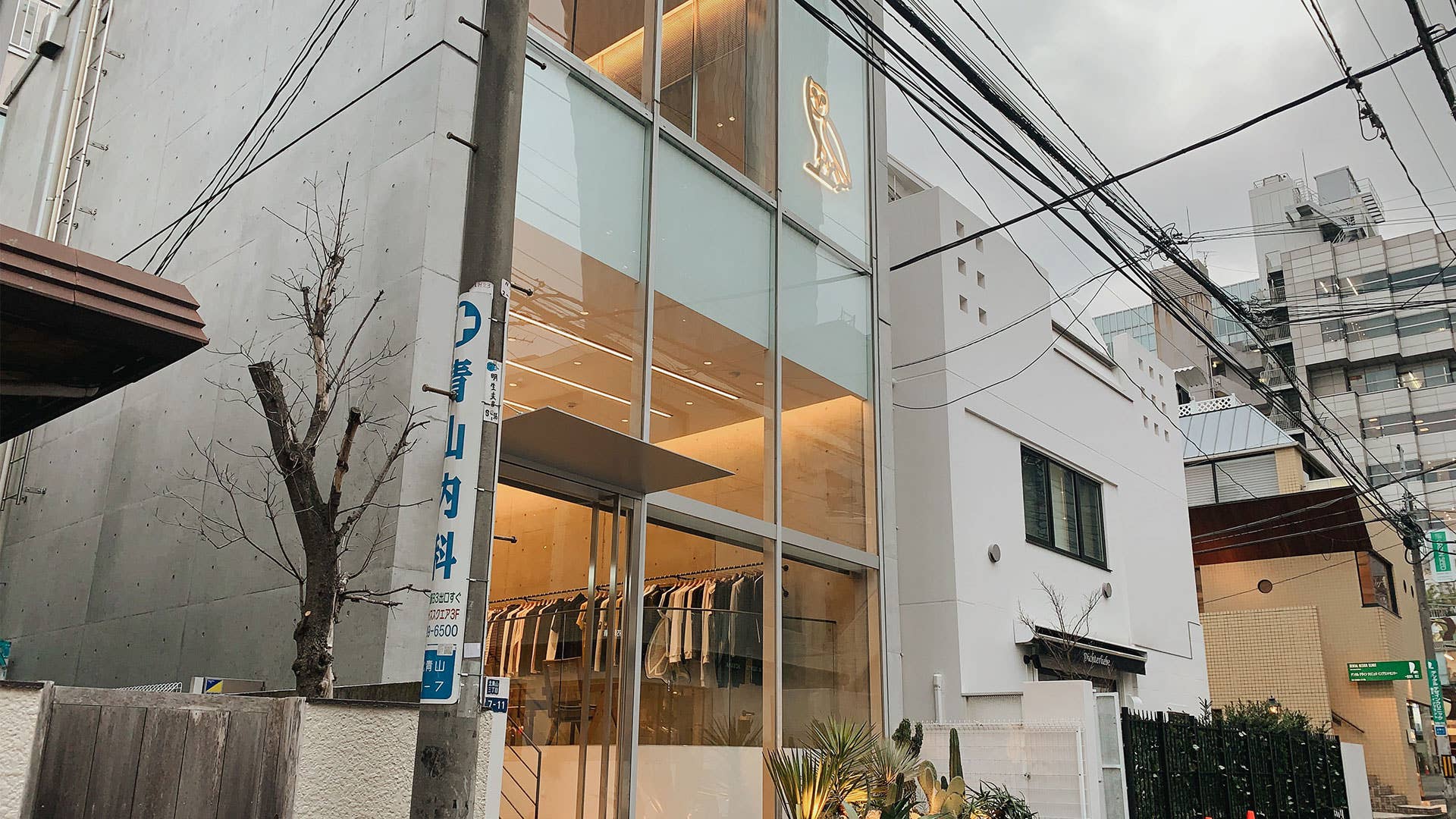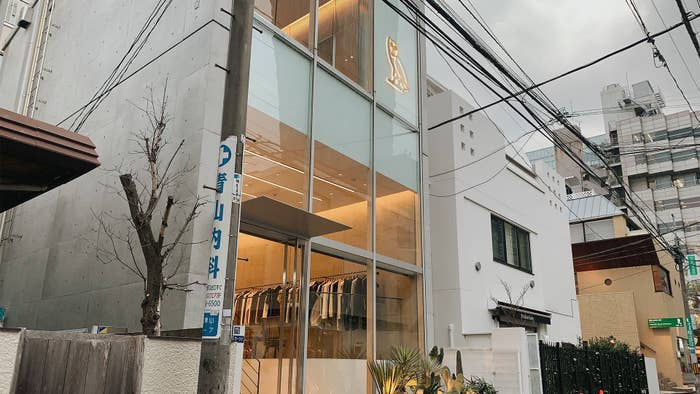
There is a row of cardboard boxes filled with unpurchased, mostly small- and medium-sized items, arranged tidily below the stairs on the bottom floor of Drake’s OVO flagship store in Tokyo.
“We’re shipping these back to the company,” says Yui Hosakawa, the shop’s assistant manager. “We’re waiting for the delivery company.” She speaks confidently in English, talking about her time spent abroad in California and how she wishes the powers that be at OVO would send them larger items. And more sneakers—the clientele loves sneakers.
“In Japan, I think we size up, even though we don't receive the large sizes,” Hosakawa explains. “But we definitely need them, because how we dress is always oversized. We don't really prefer smaller sizes. Every time the larger sizes sell out really quickly and the smaller sizes remain.”
Yes, it’s a little-known fact that everything’s bigger in Japan. When it comes to style, anyway.
True to her statement, Hosakawa is wearing a larger fit, with a baggy black crewneck OVO sweater French tucked into her loose vintage jeans, and a pair of white Jordans. Her hair is dyed a dusty pink and pulled back into a tight pony.
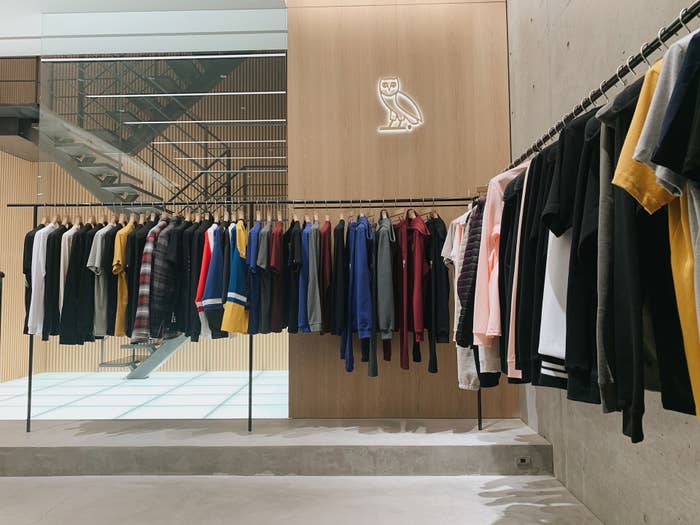
Across from the organized pile of cardboard boxes in the brand’s first Asian location, are some of the shop’s most popular items, arranged with ample white space on a display shelf near the till. There’s a tee-shirt with a red owl outlined and lettering that says “OVO” in Japanese characters. Chiaki Okuyama, the shop’s assistant manager, says it’s particularly popular with foreigners, which represent about half of the customers. Another product sold exclusively here is a black metal incense holder that resembles a lantern, a collaboration with Japanese incense producer Kuumba. It’s not available for purchase online in Canada, though you can pick up a pack of the collaboration’s incense sticks themselves for $22.

“We have a lot of people from Toronto who come in, and Canadian people in general,” says Okuyama. She asks if “everyone” is wearing OVO in Toronto and is surprised with the answer: not quite.
The 50-50 foreign-to-Japanese traffic may also seem a surprising figure in this massive, populous city. The fact that Japan’s hip-hop scene has existed largely as an underground movement for most of its history probably plays a part. Because the place and its people obviously love streetwear. Stores like Muji, Uniqlo or its offshoot GU are everywhere, offering affordable off-the-rack styles, often in muted colours or simply black or white, and almost always with baggy or loose-fitting cuts.
But where OVO is situated in the luxury hood of Aoyama, tucked down a narrow street between a 7-Eleven and a vintage jewelry store, is more of an upscale locale than some of the city’s livelier and more street-style oriented neighbourhoods like Harajuku, Shinjuku, or Roppongi, where you might find a bar or club actually playing hip-hop music for actual hip-hop fans. Here in Aoyama, shoppers are more inclined to tailor an item, and most will not blink at OVO’s $80 tees, $150 hoodies, or $200 sneakers, the latest being a brightly coloured collab with Clarks.
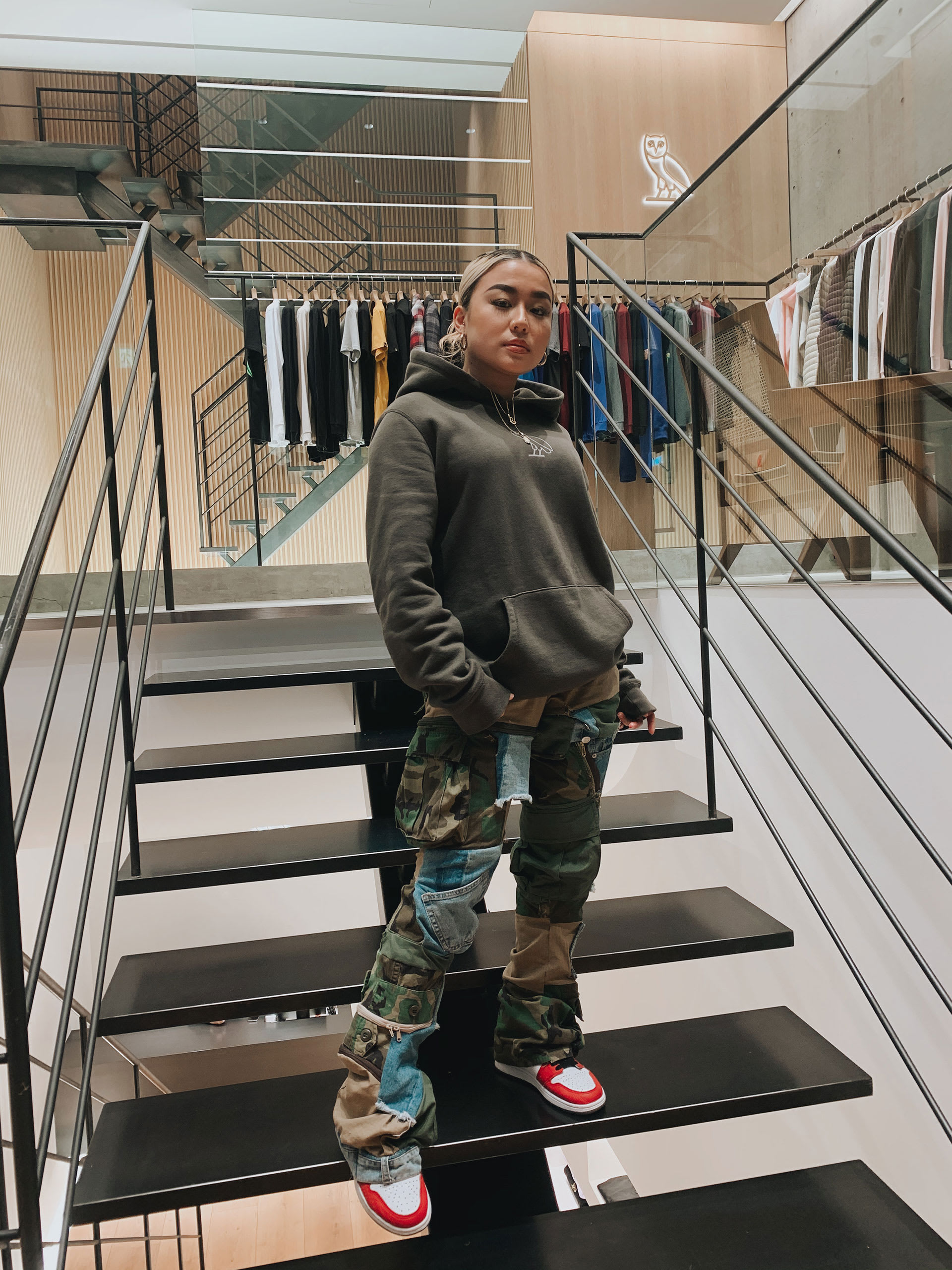
Designer Masamichi Katayama of WonderWall put the two-storey space together, and Drake’s friend and Canadian business partner Oliver El-Khatib hand-picked the location, intentionally positioning it within arm’s reach of the row of luxury retailers nearby but not too far from the city’s street style centres.
There is a handheld tally counter on a ledge near the front door. Okuyama picks it up and clicks it twice as a couple of young Japanese men enter. Management is counting foot traffic, while Drake and his bean counters count beans.
Just a hundred metres around the corner is Omotesando Street, one of the city’s most notable luxury hubs. Jimmy Choo, Burberry, Louis Vuitton, and many more international luxury brands all make their homes here. The odd “thrift” store pops up along the road, too, like a weed from between the cracks of an otherwise unblemished sidewalk. The “cool” is palpable in these shops, but pricey, with well-curated rows of $50 tye-dye tees, $80 made-in-the-USA or -Canada crewneck sweaters, and ‘Burberry’s’ (not to be confused with Burberry) trench coats for $300. The rule seems to be that if it’s vintage, it’s cool. And if it’s made in North America, it’s cooler.
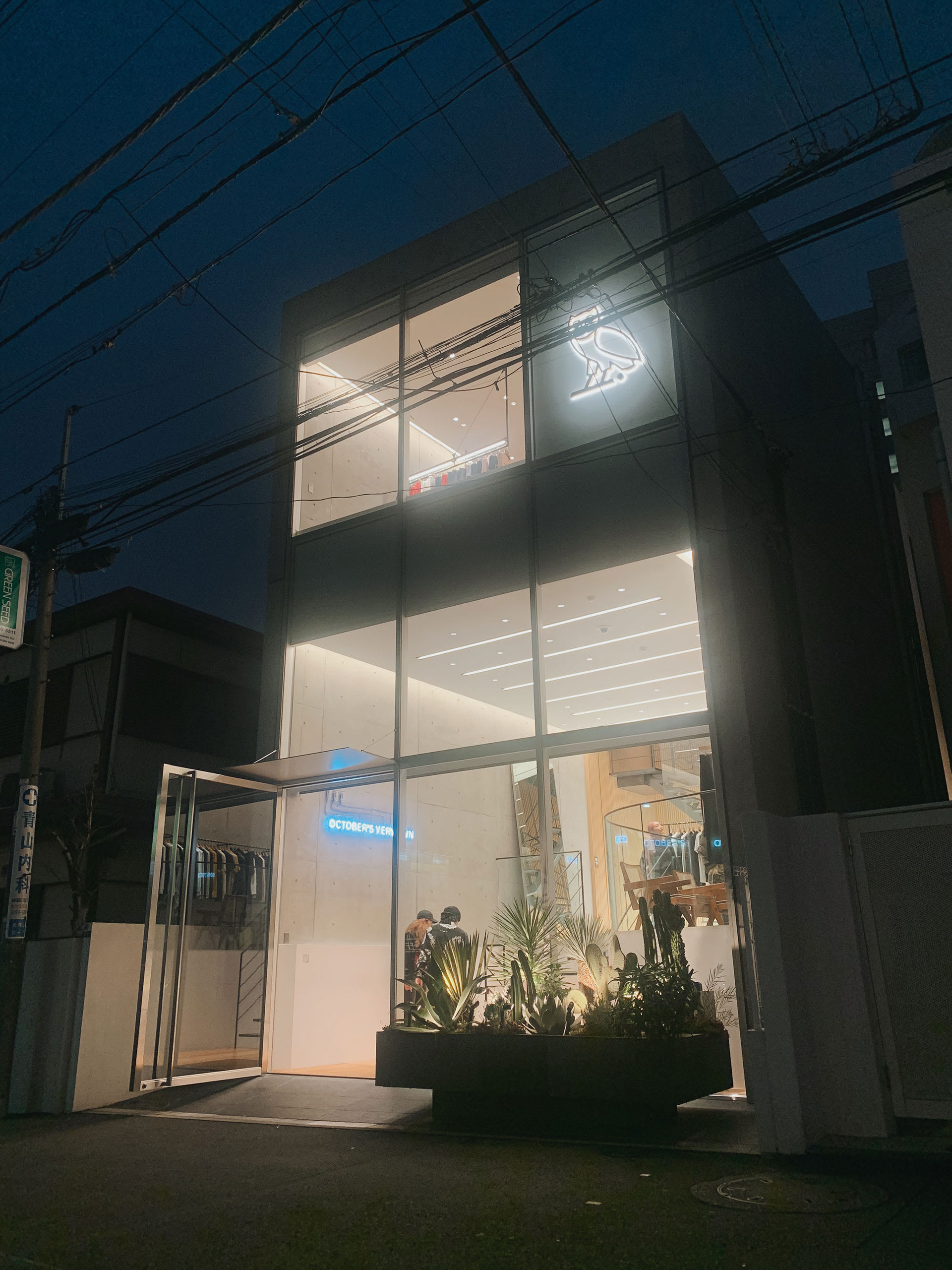
The imported vintage trend is more prevalent over in the hipster-haven neighbourhood of Shimokitazawa, where Japanese men and women shill out $30 to $80 for a used Carhartt T-shirt, or $50 for a stained and stretched grey sweater from the 1992 Masters Track meetup in Edmonton, Alberta, a fair portion of whose competitors have likely all since put their runners away for good. The fits here are more affordable than in Aoyama. The hoodie-layered-beneath-a-trench-coat combo, for example, runs rampant, perhaps explaining the $60-$120 price for London Fog overcoats from the '90s and 2000s, which are in every thrift store in Canada for no more than $25 and usually only $5.
These Japanese hipsters would have a field day in any of Canada’s many thrift stores, where items are a fraction of the price and that obscure and apparently cool Canadiana can be found on every rack. Inversely for Canadians, people watching for an hour or two in Shimokitazawa grants enough fashion inspo for a year of unique fits.
But this is why the fashion world looks to Japan. Not for what to wear, but for how to wear it. Or with what to wear it.

At OVO Tokyo, there isn’t much of a dress code. Staff are required to wear Nike or Air Jordan footwear and to generally look the part, an ask that appears to come effortlessly to them. They look like their customers. Below Okuyama’s grey, two-sizes-too-large OVO hoodie are a pair of patchwork pants, a collage of zippers and denim and camo, which she made herself over the course of seven hours.
This DIY-style, gorilla fashion was made popular in nearby Harajuku in the 1980s, as Japanese youth blended Western styles with traditional Japanese wears for some of the most unique looks the world has seen to date. Just ask Gwen Stefani. Today, with the aforementioned big-name brands and hundreds of others making basic styles far more affordable and available, and many of the world’s most popular brands also creating homes in the nation’s larger cities, those looking to make a statement can go straight to the sources.
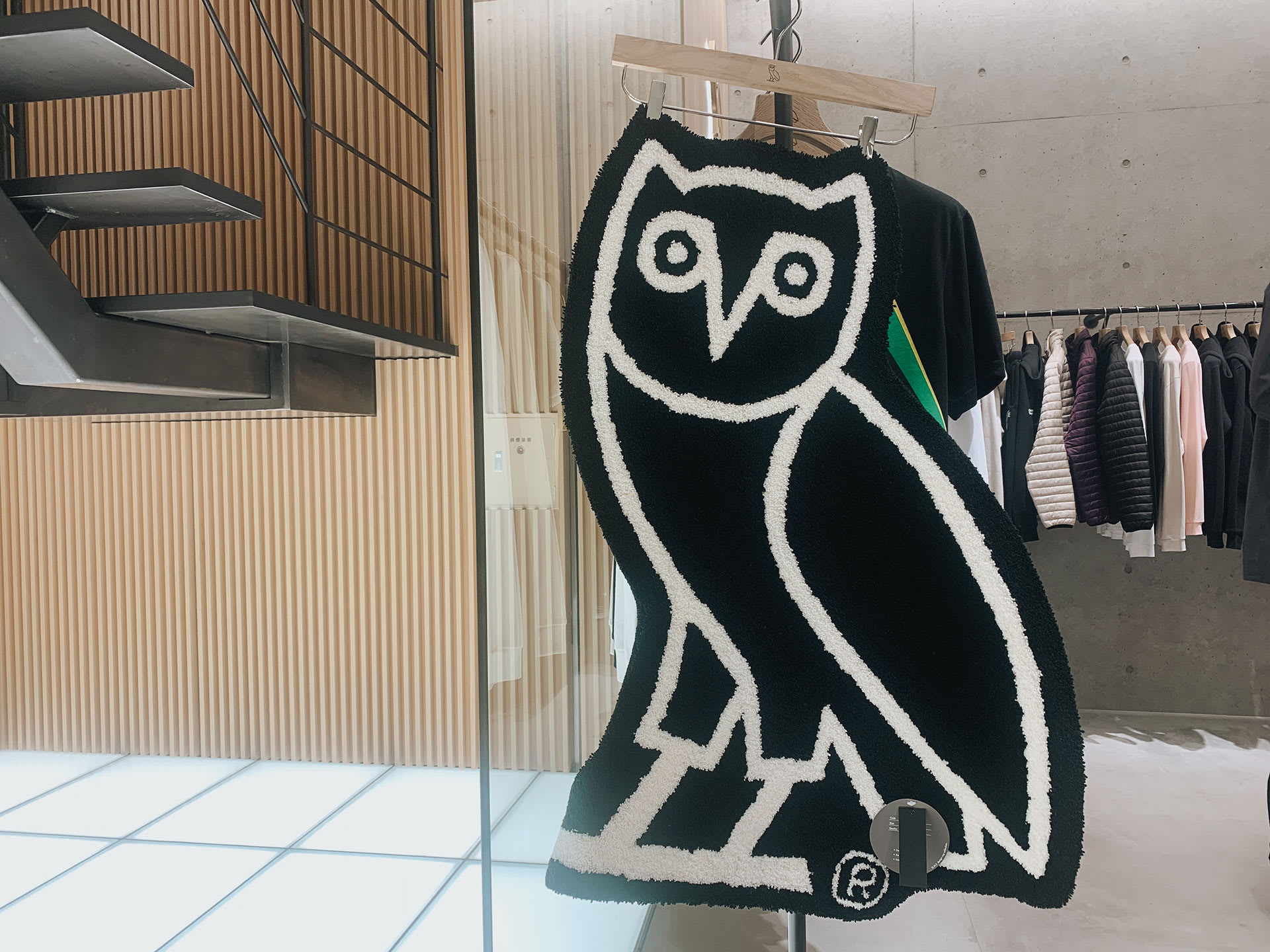
From an outsider's perspective, there seems to be no lack of self-expression through fashion here, though. On the store’s second storey—the merch gets newer as you climb, with the latest products being rolled out on the top floor—there is a black and white rug in the silhouette of an owl, which Hosakawa says draws a lot of attention from Japanese customers. Few actually buy it, however, as most apartments in Tokyo don’t have the floor space to host a metre-long entryway rug. Style limited by size, once again.
In the nearest subway station, a pair of young men in hoodies and baggy trousers folded to reveal the tops of bright white sneakers each carry a small OVO bag while they wait for the train. Inside the bag, folded neatly with a tag that reads “October’s Very Own,” is a small piece of Canadiana that fits large, about to be released into the wild fashion jungle of Tokyo, Japan.

